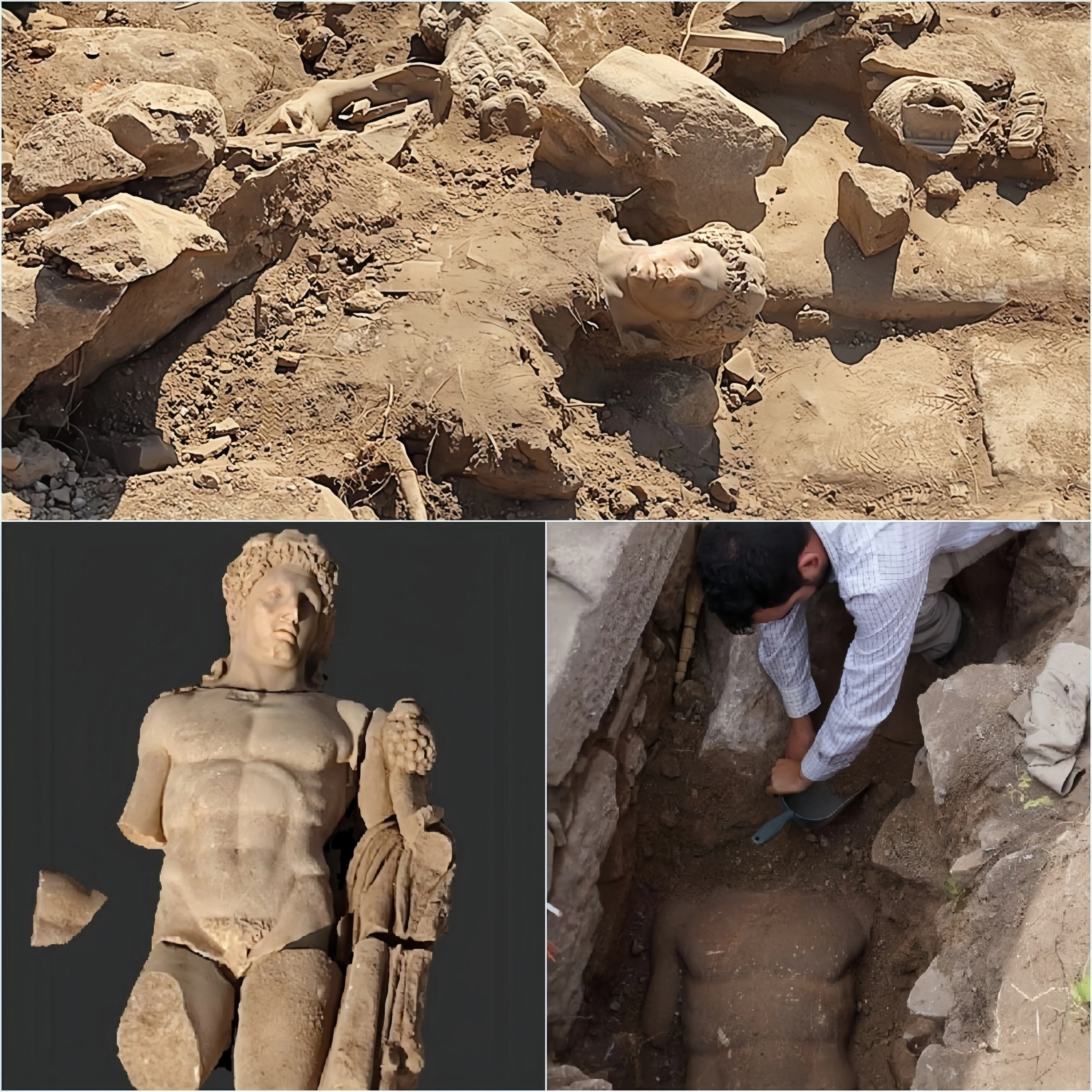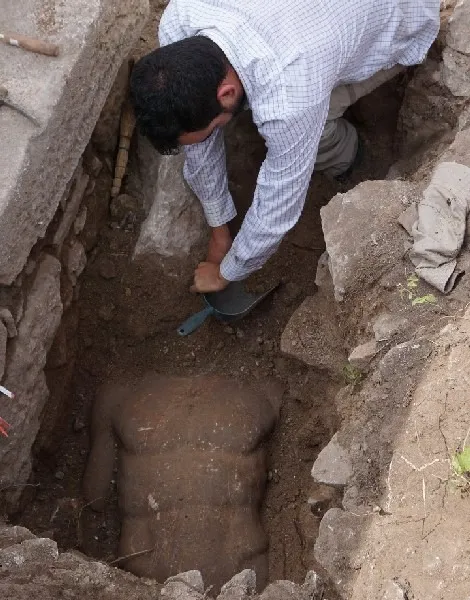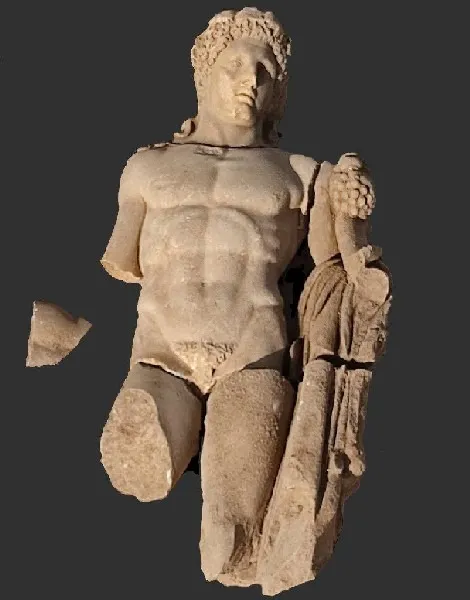The latest season of archaeological fieldwork at Philippi in northeast Greece, conducted by the Aristotle University of Thessaloniki, concluded last week with a remarkable find. Under the direction of Professor Natalia Poulou, the team focused on the east side of a main street in the ancient Macedonian city, where it intersects with another significant axis. The meeting point of these streets is highlighted by a large square, featuring a richly decorated structure, likely a public fountain.

Among the discoveries were fragments of an ornate architectural decoration from the Roman period, which was complemented by an impressive, life-sized statue of Hercules dating back to the 2nd century AD. The statue portrays a youthful Hercules, the Roman counterpart of the Greek hero Heracles, holding a club and a lion’s pelt, which further identifies him. The statue also features a wreath of vine leaves with a ribbon that drapes across his shoulders.

The find underscores a known practice of reusing Classical and Roman-era statues to adorn public buildings and spaces well into the Byzantine period. This discovery at Philippi confirms that such statues continued to embellish significant urban locations during the Byzantine era.

The excavations, which involved 24 students and were funded by the Research Committee of the Aristotle University of Thessaloniki, are set to resume next year.






